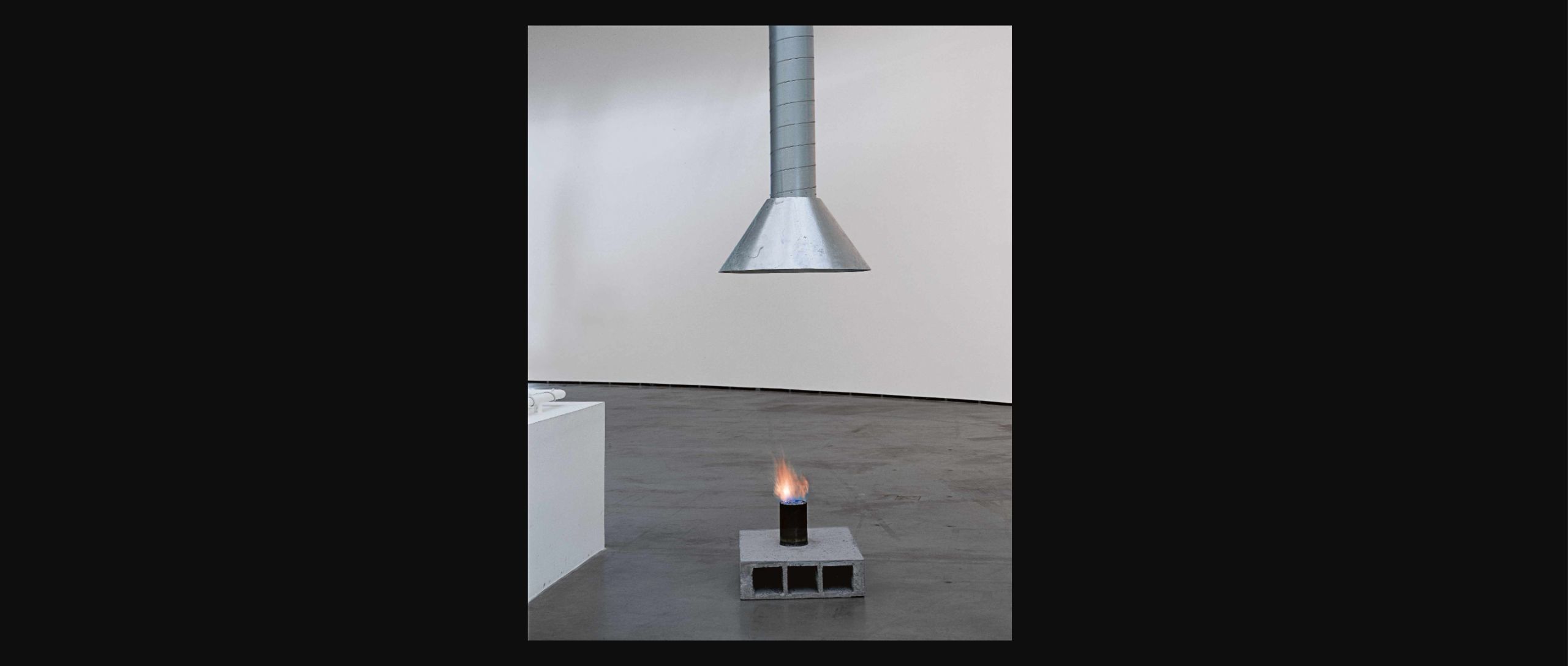
Gallery 105
Fire
One of the key elements of Asier Mendizabal’s Nom de guerre is fire –a symbol with overlapping ancestral, social, and political meanings. The installation includes a burner standing on a concrete block. They appear rather primitive, which makes the whole look quite simple from the point of view of craftsmanship. However, for all its simplicity, the work evokes the monumental character of war memorials, especially in the style of tombs of the unknown soldier. Its sobriety stands in sharp contrast to its conceptual complexity in terms of symbolic meaning, use to make social claims, and use of sculpture as a critical tool. Moreover, the fire produced by the installation triggers the idea of monument.
Safety First
Showing this work in an enclosed space in the Museum may seem contrary to the sanitized, sheltered, and protected nature of galleries in traditional art institutions. In fact, Nom de guerre —made by Asier Mendizabal (b. 1973) on the occasion of the Museum’s 10th Anniversary— requires making architectural adjustments in the gallery where it is installed, including a ventilation pipe —an unusual element in this setting, yet a conspicuous, sculpturally relevant piece here. This way, the artist gets the Museum involved in the setting of his work, thus stirring debate.
